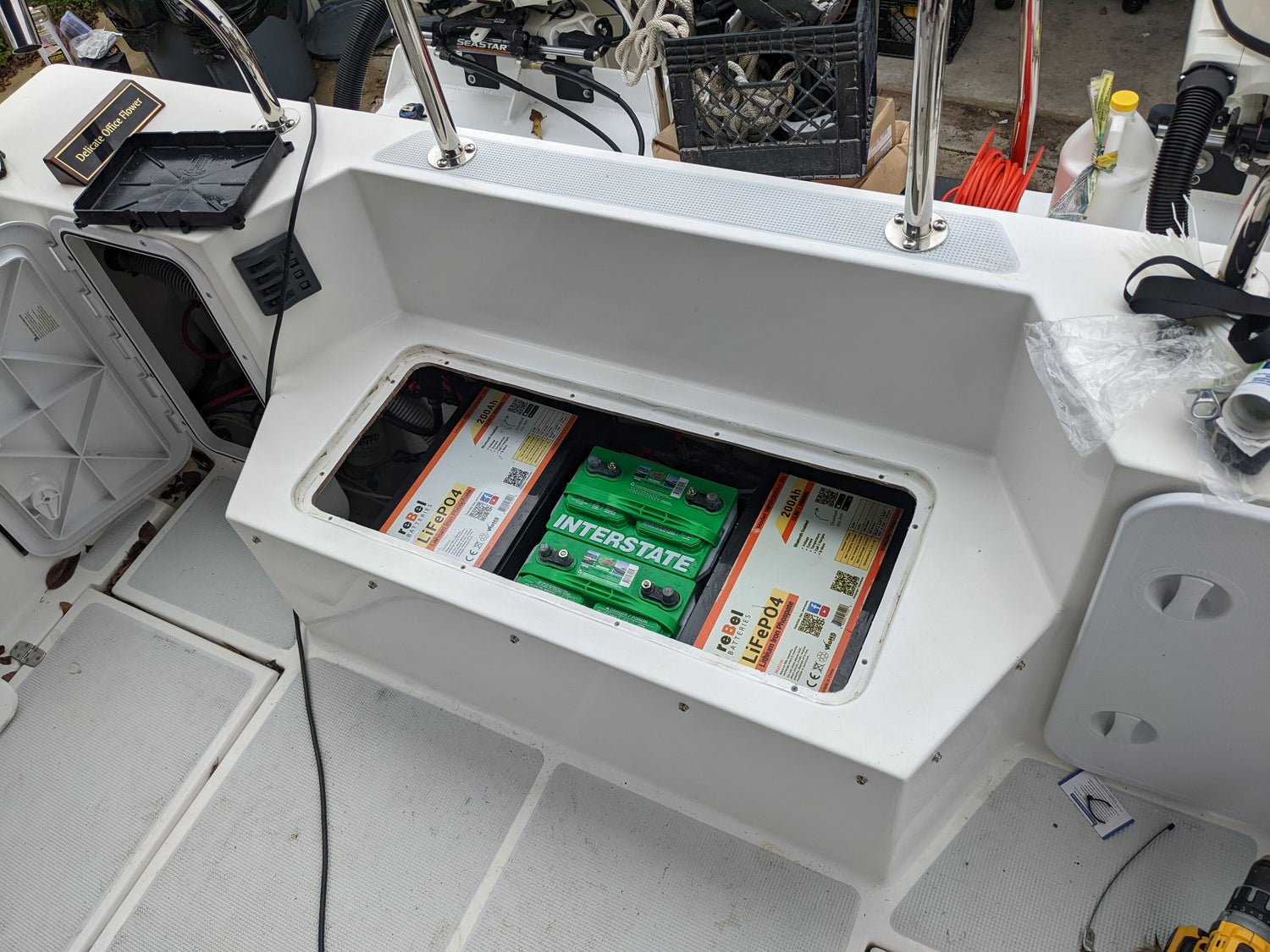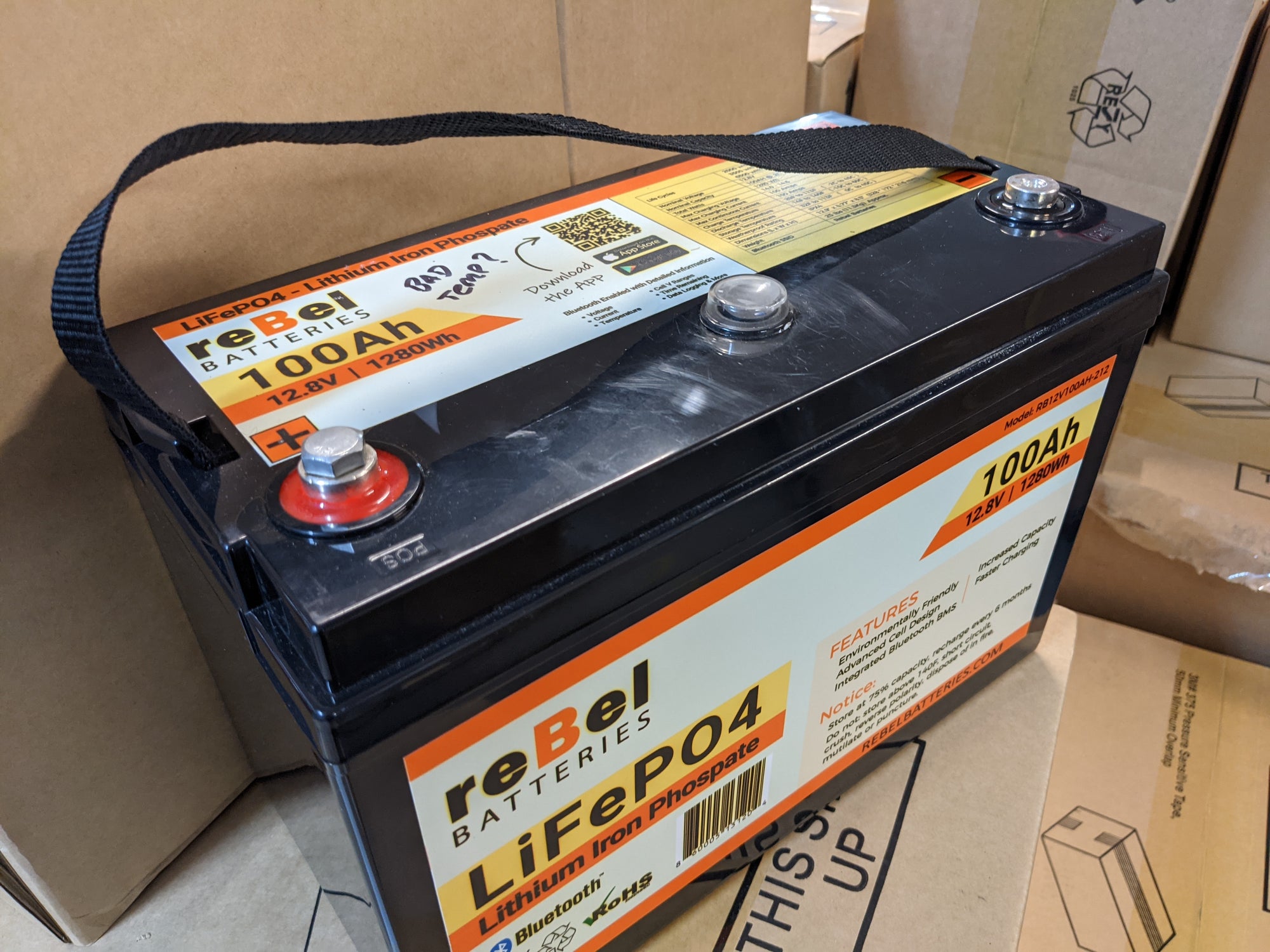How long do boat batteries last?
How long a boat battery will last depends on the kind of battery you have and what you're using it for. If you're using a Led-acid battery and you are only using it to start your boat it could last from 3 to 7 years if taken care of. For the remainder of this article I'm going to focus on LiFePO4 batteries and how long they will last powering accessories.
If you're reading this I assume you want to know how long you can power things on your boat from a LiFePO4 battery? Because everyone's situation is different I can't give you a direct answer to that question, but, what I can do is tell you how you can figure out how long you can power whatever it is you plan to power from a battery. I'm going to assume you either plan on getting or already have a LiFePO4 battery. For the examples in this article I will be using the reBel Battery 100AH LiFePO4 battery because that's a very common size in the boating and RV industry.
Lets begin with accessories and other things like a trolling motor you will be running directly from your 12 volt battery. When ever possible running directly from the battery will be the most efficient way. To know how long you can power something from a battery you have to know the amp hour rating of the battery and how many amps what ever you plan on running draws.
Lets take a trolling motor that draws 12 amps at full speed. We know our battery is a 100 amp hour battery. There's a simple formula you can use to get the time that motor will run. Amp hours de vided by amps equals time. So 100 divided by 12 gives us 8.3 hours. But that's not all there is to it. In the real world there are losses that have to be taken into consideration though they are minimal with Lithium Iron Phosphate batteries. LiFePO4 batteries can be discharged to 10V. That 100 amp hours is provided when the battery is fully discharged. Most LiFePO4 batteries stay above 12V for at least 90 percent of their cycle. Some like the reBel batteries go a little higher than 90 percent. Their batteries are also underrated so you get a little more capacity from them. For example my 50AH battery actually has 55.47AH.
My suggestion is to bank on 90 percent of your trolling motor or what ever you're powering won't operate well below 12V. If it will great! You can calculate using the full capacity of the battery. I'm using this figure for a safe margin. You should get more than 90 percent of the batteries capacity above 12V.
So if we use 90 percent for our previous calculation we divide 90Ah by 12A and get 7.5 hours. This assumes the battery is dedicated to the trolling motor and it's running the whole time. If you start and stop a few times you have to figure in a little loss for the surge of current the motor draws when it first starts. To be safe I would figure on getting 8 hours on the first example and figure on 7 hours on the second. If your trolling motor doesn't have any electronic controls it probably will operate all the way down to 10V. But if it does have electronic controls chances are it won't be happy when the voltage gets down to 11.7V or somewhere in that range.
If you're using an inverter to power things you have to keep in mind you need roughly 10 amps from the battery for every 1 amp of 120V power your inverter provides, and figure on one amp total for the inverters usage. This means if you leave the inverter on with no load it will use around 1 amp hour every hour it's left on. Some inverters take less and others take a little more. My 1000 watt inverter takes just under one amp when it has no load on it. My 300 watt inverter takes 200 milliamps when it's on with no load.
If you're using an inverter you're probably wanting to know how long things like an air conditioner or a refrigerator will run on a battery?
Go here for articles on information on calculating energy, information on LiFePO4 batteries, information on charging your LiFePO4 battery and many other topics related to Lithium Iron Phosphate batteries like putting batteries in series or in parallel and how long specific things will run on them.



